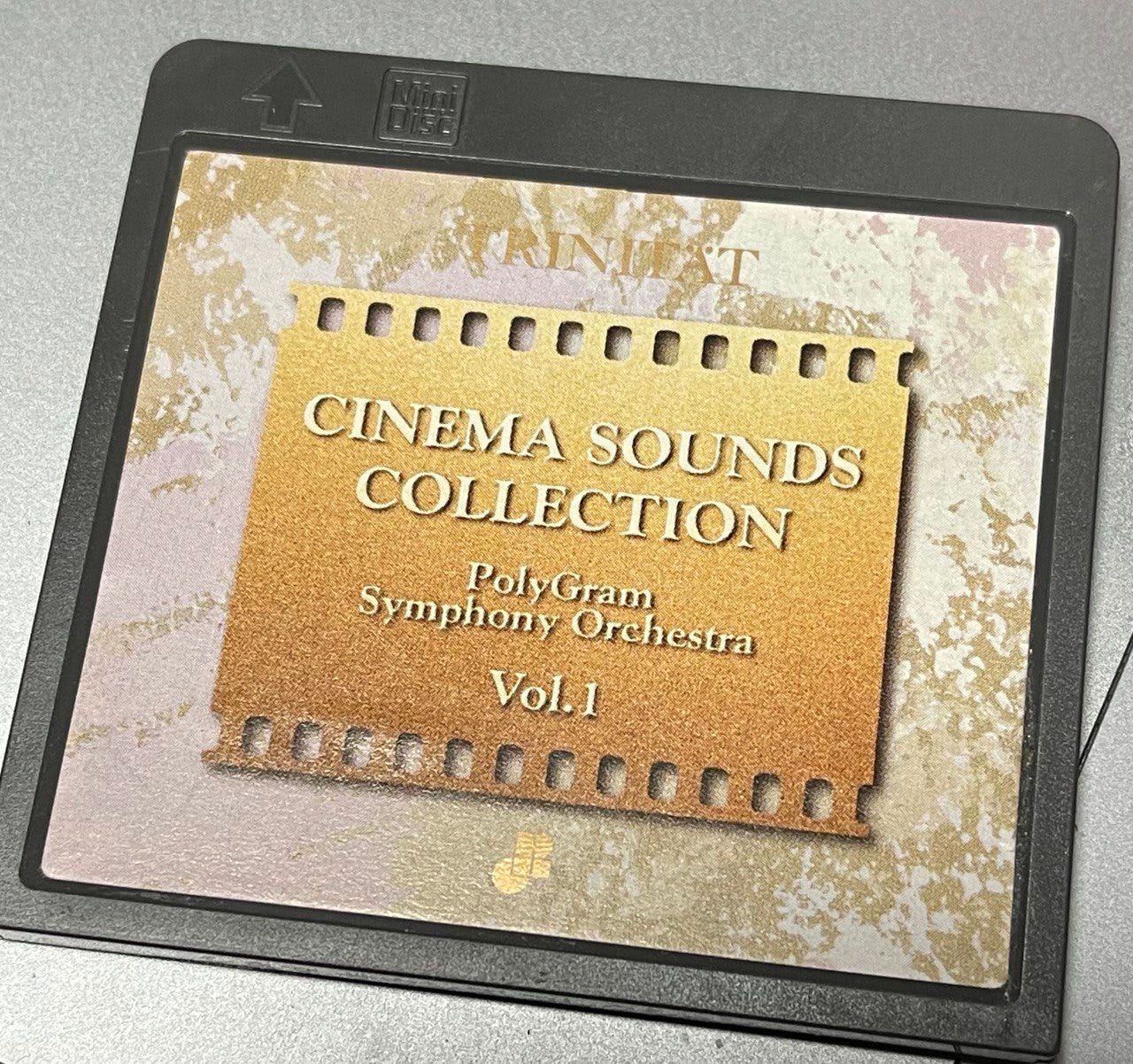A Pre-mastered Minidisc
My thing on this newsletter was an optical block from a minidisc player. In that post I mentioned how minidisc players essentially had to play two significantly different physical formats.
Most minidisc users are probably familiar with the re-recordable discs. But up until ~2002, pre-mastered minidiscs were also available. These were non-recordable discs containing commercial releases. Physically the discs look a little different, on pre-mastered discs, there’s no flap exposing the top of the disc:
On a recordable disc, the top flap allows a magnetic write head to engage with the disc. Something the pre-mastered discs don’t need.
I decided the stick a pre-mastered minidisc under a microscope, and compare it to an audio CD. What we find, is that the a pre-mastered minidiscs and CDs look nearly identical:

It is of course well known that minidiscs are essentially mini-CDs, each storing ~140Mb of data. A regular CD could store ~680Mb. Of course, both formats were used to store ~74 minutes of stereo audio. Minidisc made up for its relative lack to storage capacity by using lossy data compression. In this case ATRAC, a proprietary algorithm developed by Sony.
While premastered minidiscs were “mini-CDs” recordable discs look quite different, and without the use of a polarized microscope, you can’t see the encoded data at all.
What you can see though, are the track markings, used to keep the laser aligned to the disc:
To wrap up, let’s take a compare at all these format, including the Super Audio CD we previously looked at. The images below are scaled to the same physical size:
I suspect Blu-ray discs will be difficult to image with my current setup. But, there’s at least one more format that I’d to add to this comparison, so perhaps we’ll revisit this again in the future.
Until then, I’d be grateful it you’d sign up for the mailing list, or follow on twitter!
All content CC-by-SA





